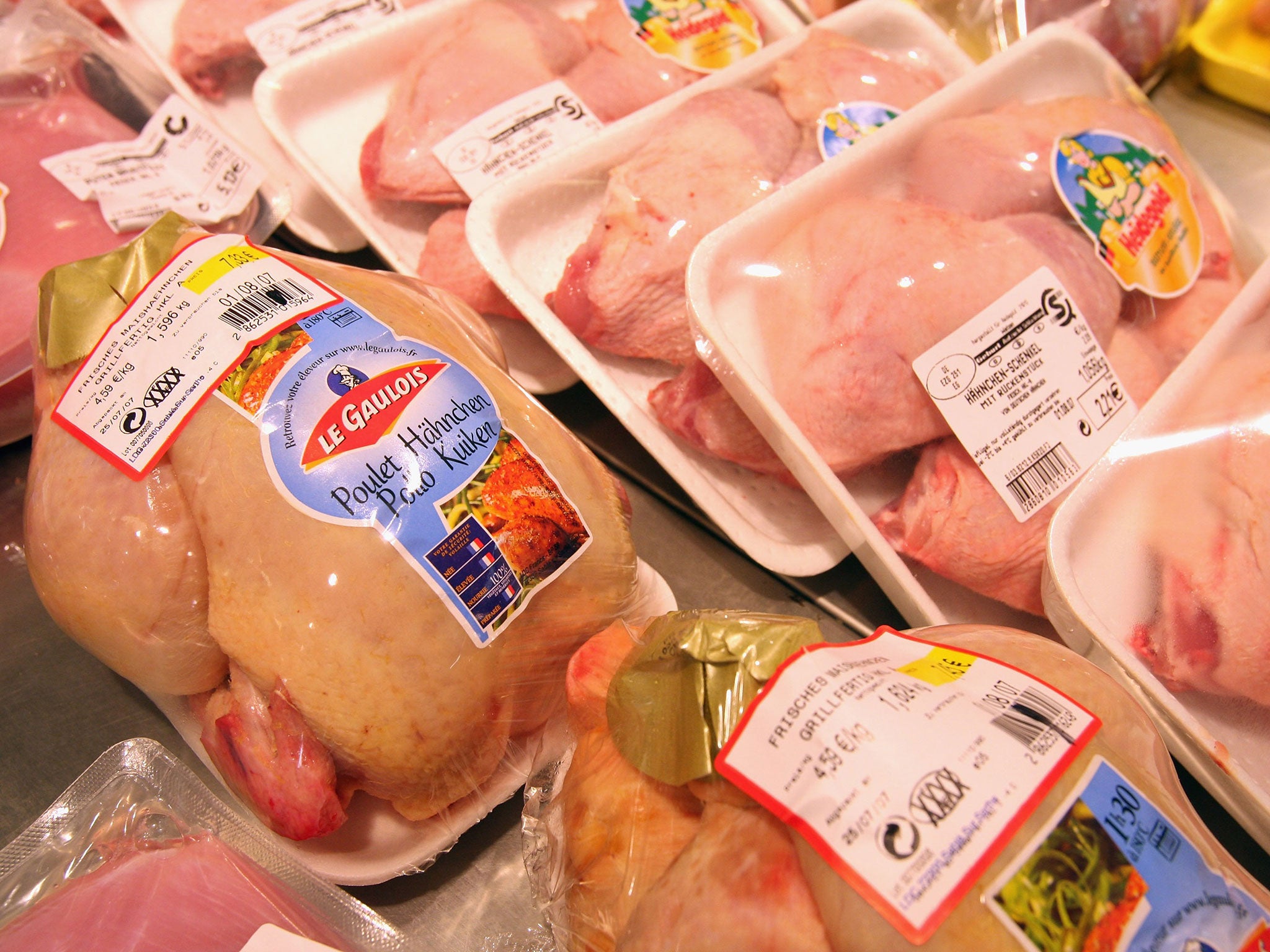Scientists call on Government to fund vaccine for campylobacter after almost three-quarters of supermarket chickens found to have the bug
The Food Standards Agency found that 73 per cent of chickens are contaminated with the bacteria, with 19 per cent heavily contaminated

Your support helps us to tell the story
From reproductive rights to climate change to Big Tech, The Independent is on the ground when the story is developing. Whether it's investigating the financials of Elon Musk's pro-Trump PAC or producing our latest documentary, 'The A Word', which shines a light on the American women fighting for reproductive rights, we know how important it is to parse out the facts from the messaging.
At such a critical moment in US history, we need reporters on the ground. Your donation allows us to keep sending journalists to speak to both sides of the story.
The Independent is trusted by Americans across the entire political spectrum. And unlike many other quality news outlets, we choose not to lock Americans out of our reporting and analysis with paywalls. We believe quality journalism should be available to everyone, paid for by those who can afford it.
Your support makes all the difference.Scientists are calling on the Government to fund a vaccine for campylobacter after nearly three-quarters of the fresh chickens in supermarkets and butchers were found to be contaminated with the potentially lethal food-poisoning bug.
The results of a year-long food-testing programme by the Food Standards Agency (FSA) found that 73 per cent of chickens are contaminated with the bacteria, with 19 per cent heavily contaminated.
The survey also found that 7 per cent of packaging tested positive for the bug, meaning it could contaminate other items in the shopping basket.
Campylobacter is the biggest source of food poisoning in the UK and chicken accounts for the vast majority of cases. Although it can be killed by thorough cooking, the bug makes about 280,000 people ill in the UK each year – with victims typically suffering severe diarrhoea, fever, headaches and muscle pain. About 100 a year die from it .
All major retailers had high levels of campylobacter, although Asda’s chickens fared the worst, with 80 per cent being contaminated and 30 per cent heavily contaminated.
“It’s a national scandal that we readily accept such a toxic food poisoning organism into our kitchens,” said Professor Brendan Wren of the London School of Hygiene and Tropical Medicine.
However, the FSA commended four supermarkets for substantially bringing down contamination levels after introducing new measures: Morrisons, Marks & Spencer, the Co-op and Waitrose.
“We expect all retailers and processors to be achieving the reductions we have seen in these retailers’ figures,” said the FSA’s director of policy, Steve Wearne.
The progress made by the four supermarkets was not reflected in the FSA’s annual figures because they only introduced the measures towards the end of the testing period. But early results show the retailers are making good progress, with Marks & Spencer bringing down the level of heavy contamination from 11 per cent to 7 per cent and Waitrose reducing it by two-thirds.
The advances have come through measures such as “blast surface chilling” – quickly blasting the chicken carcasses with minus 196C vapour to kill the bacteria – and eliminating “thinning”. This is the practice of gradually removing chickens from farms for slaughter and is thought to increase the level of campylobacter because the human “thinners” tend to visit four or five farms a day, helping spread the bug.
But while these kind of measures will help to bring down levels of campylobacter, experts say the best hope for tackling the bug is through an effective vaccine.
“The problem of campylobacter in our food chain needs to be dealt with at source by developing a vaccine for poultry flocks coupled with adequate biosafety in farms,” said Professor Wren.
Q&A: Campylobacter
Q | Should I be worried?
A | Within reason – Campylobacter makes about 280,000 people ill in the UK each year and can inflict severe diarrhoea, fever and headaches. For about 100 of these people – mostly the very young and the very old – it can be fatal.
Q | How can I protect myself?
A | Don’t touch the raw meat at any stage. Take it out of its wrapping with a fork, and do not drip any juices around the kitchen. Ensure the bird is thoroughly cooked. Don’t wash it at any point.
Q | Why is it so persistent?
A | Chickens can carry the bug more easily than humans – while a few hundred bacteria can make somebody ill, the bird may carry millions of the bug, with little disease.
Join our commenting forum
Join thought-provoking conversations, follow other Independent readers and see their replies
Comments